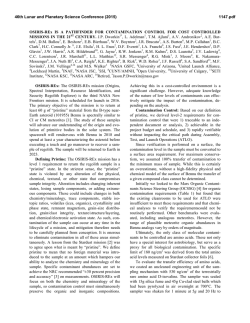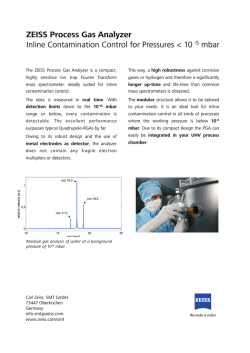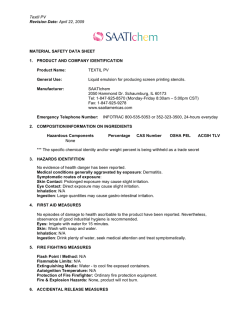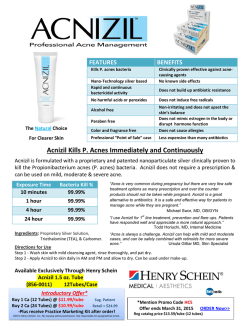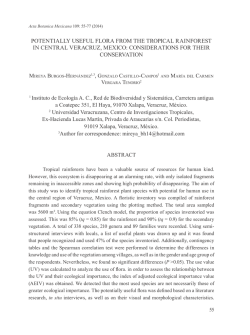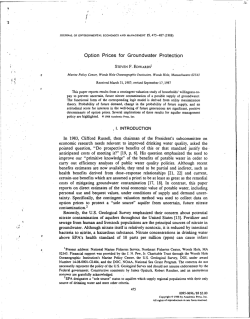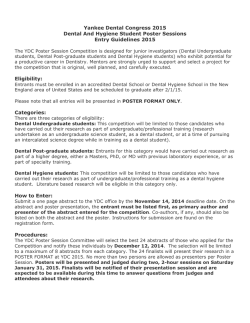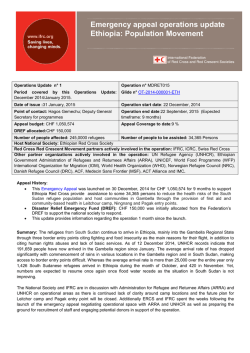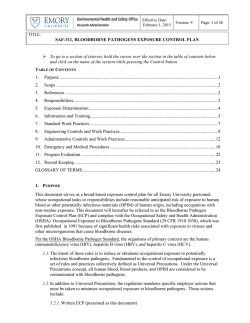
Transmission of Health Care-Associated Pathogens: The Five
Health Care Transmission of Health Care-Associated Pathogens: The Five Sequencial Steps structure, and dead skin cells with flora attached are shed on to bed linens, clothing, bedside tables, telephones and any other object proximate to a patient’s bed (Noble, 1975). The numbers of bacteria range from 3.9 x 104 to 4.6 x 106 on the hands of healthcare personnel, with similar numbers on the scalp, axilla, and abdomen. Mohamad Ibrahim, M.Sc., M.Phil The second step is that pathogenic organisms must be Infection Preventionist & Patient Safety Coordinator Labib Medical Center Health care-Associated Infections (HAIs) remain a major cause of patient morbidity and mortality in hospitals. Although the main source of nosocomial pathogens is likely the patient’s endogenous flora, an estimated 20% to 40% of HAI have been attributed to cross infection via the hands of health care personnel, who have become contaminated from direct contact with the patient or indirectly by touching contaminated environmental surfaces. Multiple studies strongly suggest that environmental contamination plays an important role in the transmission of resistant pathogens including Methicillin-Resistant Staphylococcus aureus (MRSA). The question that arises here is “How does bacterial or viral transmission occur in order to promote nosocomial infections?” There are five steps that must occur to transmit a pathogen via the hands of a healthcare worker (HCW) from one patient to another. First, there must be pathogenic organisms (bacteria or viruses) on the patient’s skin or on inanimate objects in proximity to the patient (Pittet et al., 2006). Normal human skin is colonized by bacteria which can be classified as transient or resident flora. Resident flora, such as staph and diphtheroid species require longer hand hygiene practices to remove them (such as pre-surgical hand hygiene). Resident flora does not commonly cause nosocomial infections however; transient flora is the flora that resides on the surface of the skin and is more associated with nosocomial infections. The human skin is a multilayered 28 | HUMAN & HEALTH | N°30 - Winter 2015 transferred to the hands of the HCWs. There have been attempts to stratify the activities of HCW into activities that are more or less likely to be associated with contamination of the hands. There are procedures in caring for patients that are to the naked eye, “clean” and “dirty”. Actually, these beliefs about “clean” and “dirty” influence attitudes about hand hygiene (Whitby, McLaws and Ross, 2006). Nonetheless if a procedure is visibly clean and not unlike activities that would be carried out in your own home, the pathogen contamination may not be of importance. However, clean procedures such as lifting patients in bed, taking a patient’s pulse, blood pressure or oral temperature, have been shown to contaminate hands with Klebsiella species in significant amounts. Pittet, Dharan, Touveneau, Sauvan and Perneger (1999) showed that bacterial contamination occurred after direct patient contact and it was also shown that the duration of direct patient contact was associated with the degree of hand contamination. There are numerous other studies that have confirmed the above contamination figures, and similarly hand contamination has been shown to occur with touching inanimate objects in proximity to patients. The third step in transmission is that the pathogenic organisms must be capable of surviving for at least several minutes on the hands of the HCW. There have been several studies in controlled experiments showing survival of organisms on hands after direct exposure. Pittet, Allegranzi, et al. (2006) summarize these studies well. Briefly, species of Acinetobacer, E. coli, Klebsiella, Enterococcus, Pseudomonas, and Shigella have been shown to survive on hands for minutes to an hour. Pittet, Dharan, et al. (1999) also showed that hands contaminated HUMAN & HEALTH | N°30 - Winter 2015 | 29 Health Care with bacteria will allow those bacteria to grow depending upon the humidity and temperature of the environment, the duration of patient care, the effectiveness or lack thereof of hand hygiene, and the initial degree of hand contamination. The fourth step in transmission is that the HCW must not practice any hand hygiene or that the hand hygiene procedure itself is ineffective. If hand hygiene is not practiced at all, then it seems evident that bacteria or viruses on the contaminated hands could be then transmitted to a patient. What is less clear is how effective hand hygiene must be in order to prevent transmission. The literature seems more in favor of the effectiveness of alcohol based hand gels or rubs. There do seem to be differences between plain soap and water and chemical hand rubs. Kac et al. (2005) conducted a cross-over study of effectiveness of using an alcohol based hand gel vs. handwashing with plain soap and water. At baseline the HCWs had a 15% contamination rate with transient flora. After hand hygiene, the group that used the alcohol based rub had no transient flora and the group that used plain soap and water still had some contamination. Other studies have also confirmed that alcohol based rubs are more effective than plain soap and water (Trick, Vernon and Hayes, 2003). The fifth and final step in transmission of pathogenic organisms is that the contaminated hands of the HCW must come into contact with the patient or inanimate objects near to the patient. There are several factors associated with patient colonization of organisms transferred from a HCW or inanimate objects nearby. Invasive medical devices such as central line bloodstream catheters, endotracheal tubes, pacemaker wires, intravenous catheters, and urinary catheters are all commonly used in intensive care units and to a lesser extent on general medical 30 | HUMAN & HEALTH | N°30 - Winter 2015 surgical floors of hospitals. All of these devices compromise the normal defense mechanisms that keep bacteria and viruses from causing serious nosocomial infections. But when these devices are in place, organisms transferred to the patient or nearby are more likely to cause serious nosocomial infections. Also, other medical equipment such as blood pressure machine and stethoscope etc... can play a major role in transmitting the pathogens from HCWs to the patients. Harrison, Griffith, Ayers and Michaels (2003) showed that cross transmission of bacteria can occur from clean paper towels to the hands and from hands to clean paper towels. Barker, Vipond and Bloomfield (2004) showed that norovirus contaminated fingers can transmit the virus to seven clean surfaces, including cleaning cloths which then can transmit the virus to clean hands (Passaro and Armstrong, 1997). References Harrison, W., Griffith, C, Ayers, T., Michaels, B. (2003). Bacterial Transfer and Cross- Contamination Potential Associated with Paper Towel Dispensing. Am J Infect Control, 31, 387-391. Kac, G., Podglajen, I., Gueneret, M., Vaupre, S., Bissery, A., Meyer, G. (2005). Microbiological Evaluation of Two Hand Hygiene Procedures Achieved by Healthcare Workers During Routine Patient Care: a Randomized Study. JHosp Infect, 60, 32-39. Noble, W. (1975). Dispersal of Skin Microorganisms. Br JDermatol, 93, All’-485. Passaro, D., Waring, L., Armstrong, R. (1997). Postoperative Serratia marcescens Wound Infections Traced to an Out of Hospital Source. J Infect Dis, 175, 992- 995. Pittet, D., Allegranzi, B., Sax, H., Dharan, S., Pessoa-Silva, C, Donaldson, L., Boyce, J.,on behalf of the WHO Global Patient Safety Challenge, World Alliance for Patient Safety. (2006). Lancet Infect Dis, 6, 641-652. Pittet, D., Dharan, S., Touveneau, S., Sauvan, V., Perneger, T. (1999). Bacterial Contamination of the Hands of Hospital Staff During Routine Patient Care. Arch IntMed, 159, 821-826. Trick, W., Vernon, M., Hayes, R. (2003). Impact of Ring Wearing on Hand Contamination and Comparison of Hand Hygiene Agents in a Hospital. Clin Infect Dis, 36, 1383-1390. Whitby, M., McLaws, M., Ross, M. (2006). Why Healthcare Workers Don’t Wash Their Hands: A Behavioral Explanation. Infect Control Hosp Epidemiol, 27, 484-492. HUMAN & HEALTH | N°30 - Winter 2015 | 31
© Copyright 2025

